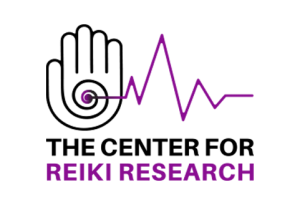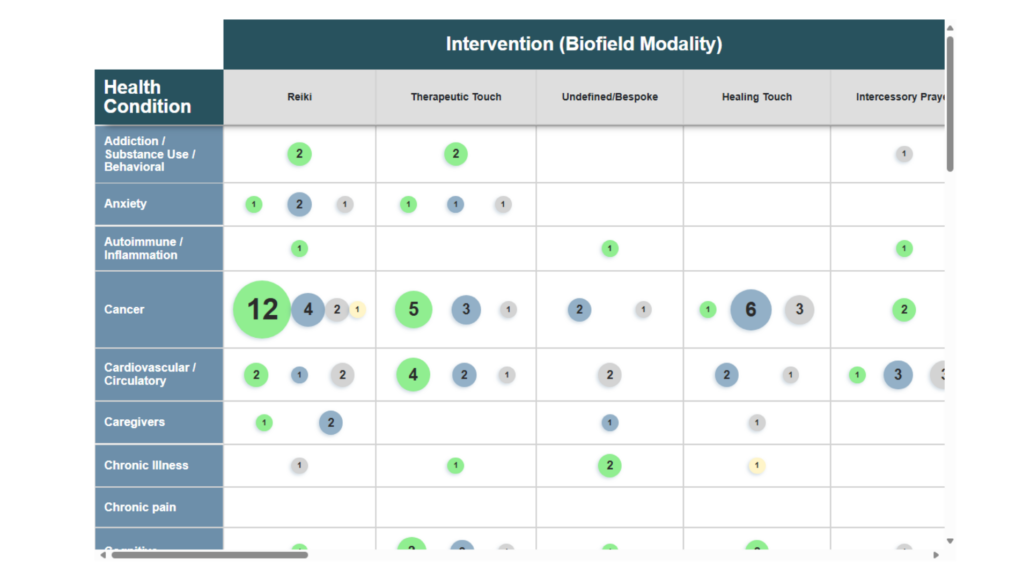Biofield Therapies Research Overview
The recent open access paper by Meredith Sprengel et al. titled Biofield Therapies Clinical Research Landscape: A Scoping Review and Interactive Evidence Map published in the Journal of Integrative and Complementary Medicine provides a comprehensive overview of the current state of clinical research on biofield therapies – including Reiki.
The authors conducted a scoping review to map the existing evidence on biofield therapies and created an interactive evidence map to visually represent the findings. The review aimed to identify the diverse populations, health conditions and outcomes that have been studied in relation to biofield therapies, the methodologies used, and the geographical distribution of the research.
Key findings from the review of 353 peer-reviewed studies published in English (including 96 Reiki studies) indicate that biofield therapies have been explored across a wide range of health conditions, including cancer, pain management, mental health disorders, cardiovascular diseases, and chronic illnesses. Most studies employed randomized controlled trials (RCTs) and observational designs, with varying levels of methodological rigor. While some studies reported positive outcomes, such as reduced pain, improved mood, and enhanced quality of life, others showed mixed or inconclusive results.
Interactive Evidence Map
The publicly available, interactive Biofield Science Evidence Map created by the authors serves as a valuable tool for researchers, practitioners, and policymakers. Intended to be updated yearly, it allows users to filter and navigate through the research landscape by health condition, study design, and outcome measure, providing a clear and accessible way to understand the scope and quality of biofield therapy research.
The paper also highlights several gaps and challenges in the current research landscape. These include the need for more high-quality, large-scale RCTs, greater standardization of biofield therapy protocols, and improved reporting of intervention details. Additionally, the authors call for increased collaboration and interdisciplinary approaches to advance the scientific understanding of biofield therapies and their potential mechanisms of action.
Overall, the scoping review and evidence map presented in this paper offer a comprehensive and detailed overview of the clinical research landscape for biofield therapies. They underscore the importance of continued research in this field to validate the efficacy of these therapies and to adopt them as integrative care options in allopathic medicine.





As an experienced health researcher/research scientist beginning in my Reiki journey, this review was very helpful! Positive results were found in studies of Reiki for a number of health conditions including with healthy individuals (13 studies found positive results), cancer (12), healthcare professionals (9), psychological/mental health (8), surgery (8), stress (5), women’s health (5), pain (5) and gastrointestinal (4). A number of conditions have only had 1 or 2 well conducted research studies at this point– so if you do not see a condition of interest listed, it’s likely because few or no studies have conducted for that health condition. While there were also studies that reported mixed results with Reiki, there were no (0!) studies that reported negative effects of Reiki.